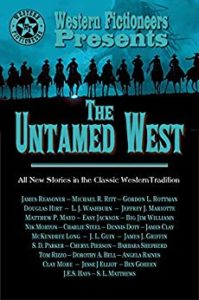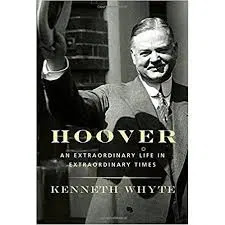The older I get, the more birthdays mean to me. But, to date, none have been as monumental as today’s.
Today I am fifty.
A half century. Hard to believe, and, yet, not.
The one thing about having one’s birth year be 1968 and the month be December is that all the anniversaries roll through the year to help remind me what age I am. The Tet Offensive, Lyndon Johnson’s announcement he would not run for reelection, the assassinations of Martin Luther King, Jr. and Robert Kennedy, the protests outside the Democratic National Convention in Chicago, the election of Richard Nixon, the White Album’s release, and more. The only major thing that always comes to mind after my birthday was when Apollo 8 circled the moon for the first time and we humans got to see earth from far away. And there’s always the shadow of the Pearl Harbor anniversary tomorrow.
Speaking of history, I was surprised when my dad once told me that his mom was worried that I would be born on December 7. Mind you, 1968 is 27 years after the attack on Pearl Harbor, but the memory still burned in her brain.
Every year, when your birthday rolls around, someone always asks you “Do you feel older?” The answer today, and always, is not really. I’m still just me. Friends and family might disagree, but about the only physical evidence of my age is the number of gray hairs. Granted, the ones at my temples evidentially present me as distinguished. I don't know about that, but I enjoy not getting carded buying wine at Trader Joe's. The ones in my beard, however, certainly show my age.
Shrug. Inside my head, I’m still a young man. Some days, I’m more youth than young man. Others, I’m just a kid. When a new Star Wars movie debuts, I’m back to being eight.
Up until now, birthday have always been a number.
Now, the number is fifty.
Throughout the years, as my birthday approaches, I grow reflective. How fascinating the timing this year with the funeral proceedings of President George H.W. Bush going on. His was a life well lived. An example of how to carry oneself. And he loved his family so, so much.
I love my family, too. I’m a husband. I’m a dad. I’m a son. Those relationships are what matter most. Those are truly the best gifts in the world.
One sign of getting older occurs most Christmas seasons. “What do you want for Christmas?” I often ask my mom and dad and wife. The answers tend to be “Not much” or “I don’t really need anything.” Sure, we can all find the few material things we’d like to own, but more often than not, the gift of life is the best. I’m often asked why I spend most every day in a good mood with a smile on my face. My answer is simple: “I woke up.” Every day of life is a good day. Yes, there will be days more difficult than others, but those hard days are part of life, part of the seasons of life. One has to go through them because there are always good days on the other side.
Sometimes—many times—when I listen to a certain bit of music, my wife has claimed I was born too late. No, I always say. I loved the years of my life because I get to appreciate the old music and discover the new. And that holds true for the rest of my life.
Born while Lyndon Johnson was president, I have now lived through ten presidential administrations. I have seen the ends of four decades (I don’t count the 1960s since I wasn’t aware of them) with one right around the corner. My early days were bathed in the 1970s: comics, Legos, Mego super-hero dolls, Disney on TV, records, books, riding bicycles far and wide, The Three Investigators, The Hardy Boys, and the two biggies from my childhood: KISS and Star Wars.
It’s hard to overstate how big a deal Star Wars was for me (and for just about every other kid my age). It was foundational, fundamental, and a way to see the world. With the first movie, the eight-year-old me learned about heroes. With Empire, the eleven-year-old me learned heroes don’t always win. Return of the Jedi taught me heroes triumph in the end, even at cost. Star Wars framed a certain way of viewing pop culture. It’s a frame I’ve expanded to include so much other stuff.
My childhood was analog. My youth straddled the analog and digital age. My college and grad school years saw the birth of the internet. My adult and career life saw technology unimaginable to that kid who watched Star Wars in 1977. I love being part of the bridge generation of technology. We know how great it is that we have a random feature on our phones to play thousands of songs yet also know the exquisite detail and precision of crafting a mix tape.
I’ve loved being a comic book geek my entire life. As great as it is now to have numerous comic book films per year, I loved being a fan in 1978 and 1989 when there was only one.
I’ve loved music so much. I enjoy playing saxophone in bands and marching for presidents. I still play my sax in church, my own offering to a gift God bestowed me. I loved discovering David Bowie as “who’s that other guy singing with Queen?” I loved discovering Chicago from my best friend, Chris, back in high school when he handed me a cassette of Chicago IX and saying, “I think you’ll like this.” I loved having my opinion of Bruce Springsteen turn around. And I’ve enjoyed living long enough for a band like The Struts to emerge and remind us how great rock and roll can be.
I loved witnessing the birth of the year 2000. That was always The Future in many SF books and comics. Now, it’s our past.
I loved living through so many moments of history, the good and the bad.
I love the huge amount of books I own that will never read. But who cares? I simply love books.
I loved growing up in west Houston, the suburbs. I loved that, when I moved back to Houston after grad school and took an apartment on Fountainview, a mere block away from my future wife’s condo, I considered it way in town. I love driving around Houston with my son, pointing out old things and relating memories. And I really love how Houston has grown to become a major metropolitan city, with a food culture rivaling few other cities.
When it comes to sports and being from Houston, well, we’ve not always had good luck. I’m old enough to be able to say “Renfro was in” and many folks of a certain age will agree with me and know what I’m talking about. I didn’t really love getting out of church one Sunday in 1993, seeing the Houston Oilers were up 35-3, and thinking “We got this.” I loved seeing the Houston Rockets win back-to-back championships, especially the second one. I really loved seeing the Houston Astros finally claim the first World Series title for this town.
But of all the things I cherish in my now fifty years of life, it really does come down to family. I have been blessed with parents who are the best parents I could have asked for. I have been blessed with a wife who compliments me in so many ways and keeps me grounded. And I have been blessed with a son who is a joy to laugh and play with, and who helped me remember many, many things from my own young life that time had papered over.
These are the years in which folks have their mid-life crises. I honestly think that stems from lives filled with regret. Here’s my outlook: everything that happened to me got me to this spot, right here, in front of our Christmas tree, on my fiftieth birthday. Every bad decision, every good decision, every bad event, every good event, everything along the path molded me, shaped me, and made me who I am. Would it have been nice to have skipped a few bad things? Maybe, but then I wouldn’t have received the good things in the same way I have. So I always come around to having no regrets. Besides, what good is regret? We can’t go back. So I just take stock of my life up to now and make any course corrections for the future.
One thing that does keep me excited and the midlife crisis at bay is the business of writing. It’s been about ten years now since I started writing in public, both the blogs and the stories. That keeps me young and fresh, to be honest. If I have any “regrets,” it’s that I didn’t start writing sooner. But I’m trying to catch up, and running my own business keeps me excited for the future. I really enjoy writing, and plan on continuing it for a long, long time.
Fifty years.
I started writing this yesterday, knowing I would complete it now, early morning on December 6. I kind of planned it that way.
I woke up this morning and smiled. Thanks, God. Another day of life. Fifty years of life.
Man, has it been awesome!

 I never saw this show coming and it totally blew me away.
I never saw this show coming and it totally blew me away.
 It was forty years ago today…
It was forty years ago today…



 To commemorate the end of summer 2018, let’s take a trip back forty years.
To commemorate the end of summer 2018, let’s take a trip back forty years.







